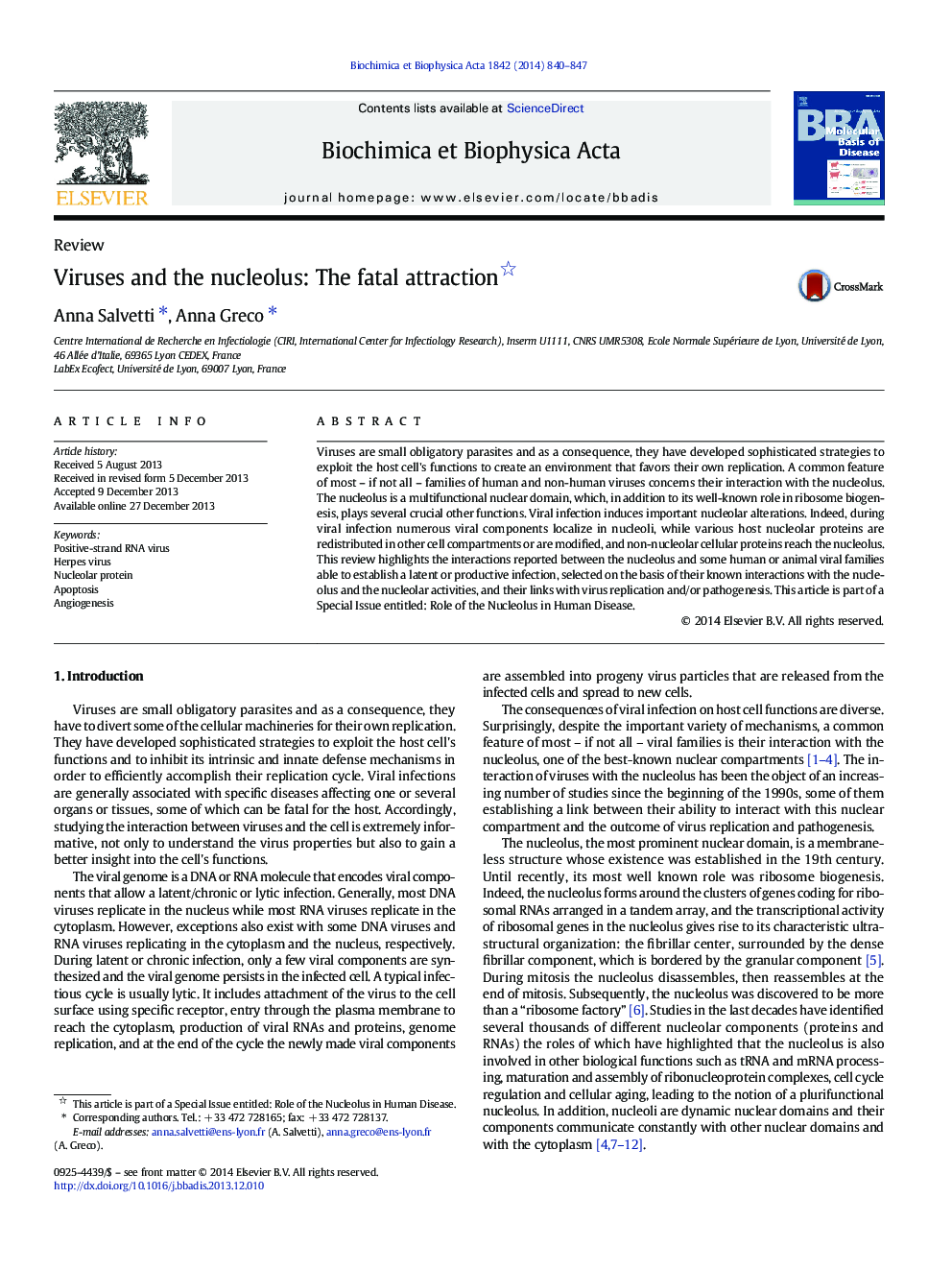| Article ID | Journal | Published Year | Pages | File Type |
|---|---|---|---|---|
| 1904770 | Biochimica et Biophysica Acta (BBA) - Molecular Basis of Disease | 2014 | 8 Pages |
•Most viruses interact with the nucleolus that plays a major role in virus life cycle.•Virus/nucleolus interaction is crucial for virus replication and pathogenesis.•Role of nucleoli in the infection with selected RNA viruses and herpes viruses
Viruses are small obligatory parasites and as a consequence, they have developed sophisticated strategies to exploit the host cell's functions to create an environment that favors their own replication. A common feature of most – if not all – families of human and non-human viruses concerns their interaction with the nucleolus. The nucleolus is a multifunctional nuclear domain, which, in addition to its well-known role in ribosome biogenesis, plays several crucial other functions. Viral infection induces important nucleolar alterations. Indeed, during viral infection numerous viral components localize in nucleoli, while various host nucleolar proteins are redistributed in other cell compartments or are modified, and non-nucleolar cellular proteins reach the nucleolus. This review highlights the interactions reported between the nucleolus and some human or animal viral families able to establish a latent or productive infection, selected on the basis of their known interactions with the nucleolus and the nucleolar activities, and their links with virus replication and/or pathogenesis. This article is part of a Special Issue entitled: Role of the Nucleolus in Human Disease.
